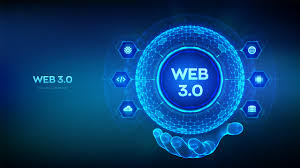Web3: The Next Evolution of the Internet
Introduction
The internet has revolutionized the way we communicate, conduct business, and access information. Web3, the next generation of the internet, promises to redefine these interactions by introducing decentralization, trustlessness, and user ownership. This white paper explores the key concepts, technologies, and potential applications of Web3, highlighting its transformative impact on various industries.
1. Understanding Web3
- Decentralization: Web3 shifts away from centralized control, distributing power and data across a network of nodes.
- Trustlessness: Transactions and interactions on Web3 networks are facilitated without intermediaries, relying on cryptographic mechanisms for trust.
- User Ownership: Web3 empowers users to own and control their data, breaking away from the traditional surveillance-based internet model.
2. Key Technologies of Web3
- Blockchain: Blockchain technology provides a secure and transparent ledger for recording transactions and data.
- Smart Contracts: These self-executing contracts automate agreements, reducing the need for intermediaries.
- Cryptocurrencies: Digital currencies like Bitcoin and Ethereum serve as a medium of exchange and store of value on Web3 networks.
- Decentralized Applications (DApps): DApps are applications built on blockchain platforms, offering decentralized services and governance.
3. Potential Applications of Web3
- Finance: Decentralized finance (DeFi) platforms enable peer-to-peer lending, borrowing, and trading without intermediaries.
- Gaming: Play-to-earn (P2E) games allow players to earn cryptocurrency by playing, creating a new economic model.
- Supply Chain: Blockchain can track the movement of goods and materials, ensuring transparency and authenticity.
- Social Media: Decentralized social media platforms aim to give users more control over their data and content.
- Identity and Authentication: Web3 can provide secure and decentralized identity verification systems.
4. Challenges and Considerations
- Scalability: Web3 networks often face scalability challenges, limiting their transaction throughput.
- Interoperability: Ensuring seamless communication and data exchange between different blockchain networks is a significant hurdle.
- User Experience: Creating user-friendly interfaces for Web3 applications can be complex.
- Regulation: The regulatory landscape for Web3 is evolving, and navigating legal and compliance requirements can be challenging.
5. The Future of Web3
- Mass Adoption: For Web3 to truly transform the internet, it needs to achieve widespread adoption and acceptance.
- Integration with Existing Systems: Seamless integration with traditional web infrastructure will be crucial for mainstream adoption.
- Addressing Environmental Concerns: The energy consumption associated with blockchain technology needs to be addressed to ensure sustainability.
References
- Web3 Foundation: https://web3.foundation/
- ConsenSys: https://consensys.io/
- CoinDesk: https://www.coindesk.com/
- The Block: https://www.theblock.co/
Conclusion
Web3 represents a significant shift in the way the internet operates, offering the potential for greater decentralization, trustlessness, and user ownership. While challenges remain, the potential benefits of Web3 across various industries are substantial. As technology continues to evolve, it is likely that Web3 will play an increasingly important role in shaping the future of the internet.



